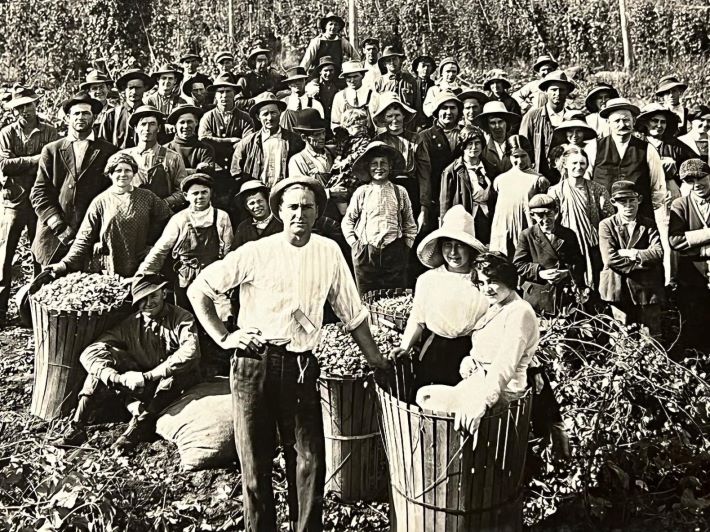
Via the Oregon Hops & Brewing Archives (see below)
As always, here you will find a hodge podge of links to stories that recently struck my fancy, most often during the past week. To call it That Was The (Beer) Week That Was, as I did last week, suggests it might be a more complete roundup of beer news that it is. But because TWTBWTW kind of rolls of the tongue, or perhaps serves as a test to check just how much you’ve had too much to drink, I’m sticking with it.
THINGS ARE GREAT, UNLESS THEY AREN’T
Mostly sunny with a chance of occasional showers
“It’s time to break out your sunglasses beer folks.”
It’s going to be a ‘make-or-break’ year for struggling craft brewers
“It’s a good time to be super careful and super strategic because we’re facing rising prices in pretty much everything. We’re trying to think of where we want to be five years from now.”
Craft Beer Posts ‘Steepest’ Declines of Any Segment in the Off-Premise
Declines have accelerated to nearly -10% compared to the -6% decline in calendar year 2021, according to Bump Williams Consulting.
WHAT IF?
Micro-wineries
Napa Valley legislators recently gave final approval to the Micro-Winery Ordinance, which simplifies the permitting process for small producers who make up to 1,000 cases of wine per year. Operators of small breweries will read this story and immediately see parts of their own businesses.
It also got me thinking about micro and driving past liquor stores that advertise “microbrews” inside. Before there were craft breweries there were microbreweries. This wasn’t a legal designation. At the outset, and for record keeping purposes, the Institute of Brewing Studies (the predecessor of the Brewers Association) defined microbreweries as those that produce less than 10,000 barrels per year. That was raised to 15,000 barrels early on, where it remains today.
Considering only about the amount liquid, 1,000 cases of wine is comparable to less than 77 barrels of beer. If you take into account the amount of ethanol (alcohol) in each then it would still be less than 200 barrels.
A CHANGE IS GONNA COME
The Browning of Utah beer
“I think it’s our chemistry—how we mesh well together. We just have this energy going, and it makes people intrigued and want to talk to us more.”
And, “I feel like when the four of us are out together, we are kind of a tidal wave—especially if we’re at a brewery.”
#beerisagriculture
Each Exhibit ‘A’ beer (brewed in Framingham, Mass.) now brewed in collaboration with local farmers will carry a badge which denotes exactly how many square feet of local farmland each can of beer supports. The first beer to feature the badge is a relaunch of the brewery’s popular American IPA, Market Gap, which supports 4 square feet of land per can.
FOR YOUR EYES
The photo at the top comes from a post at the Oregon Hops & Brewing Archives. It’s from the delightful album of the Wigrich Ranche (sic), a hops farm located in Buena Vista, Oregon, and circa 1915. There’s more.
ALWAYS FOR PLEASURE
Beer festivals are back
In this case the Side Project Invitational in St. Louis. “After three years or so away from the world of hype beer and the brewing avant garde, it seemed like a vital opportunity to check in with the wider world of exceptional barrel-aged brewing, to remind myself of many of the beers I’ve been missing—not to mention the festival experience itself.”
Exploring a ‘beer city’
Any properly informed beer geek knows Leuven first as the home to Stella Artois. But thinking there isn’t more is a little like expecting to find nothing but Budweiser in St. Louis (see previous entry). There was a city center pub, a suburban estate pub, and exhibition pub . . .
“We also saw small local boozers selling cheap Stella to drink by the fruit machine; cafes aimed at students; gay bars; and of course plenty of places to get a portion of frites on your way from one to another.”
Coming home
First there was a pandemic. Then there was a change of ownership. Good reason to fear revisiting an old friend.
“(I)t’s still the welcoming space I remembered and cherished. Two women sat in the middle of the bar, still in their work clothes, enjoying happy hour or maybe an early date. An older gentleman with a white moustache sipped his drink at the corner of the bar, grateful for the bar’s return. Others filtered in and faded out, in groups and couples and alone.”